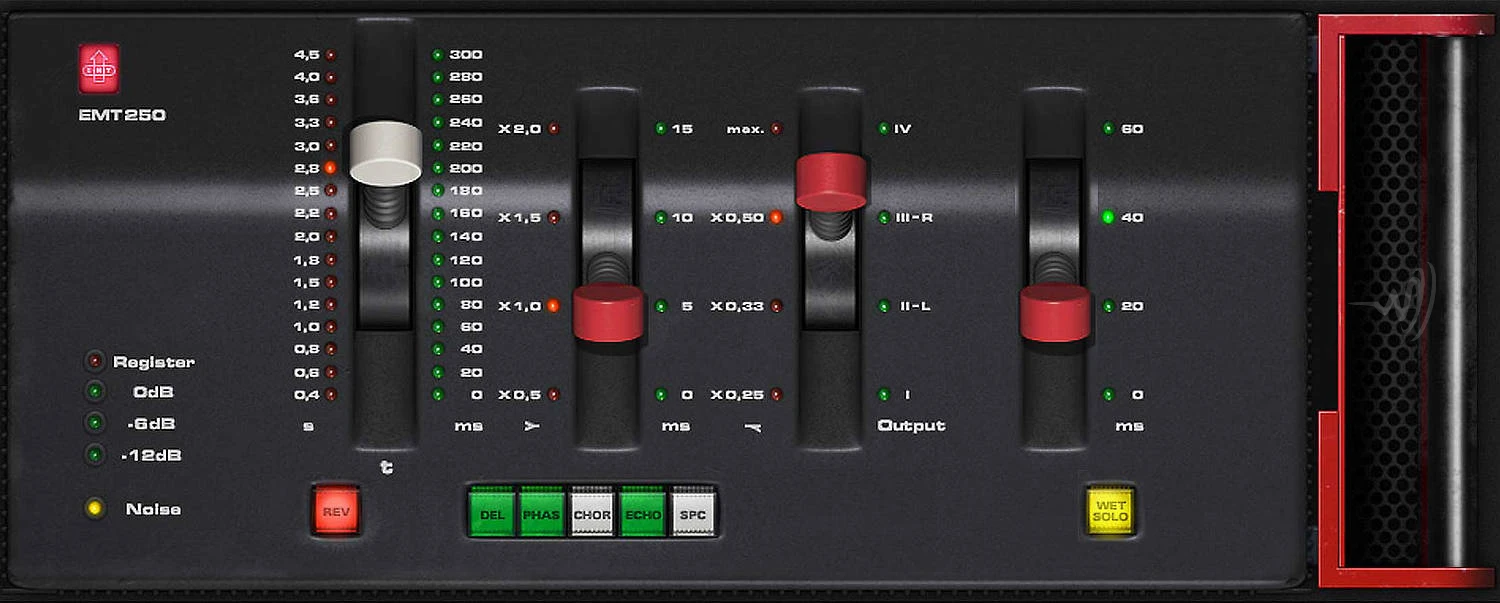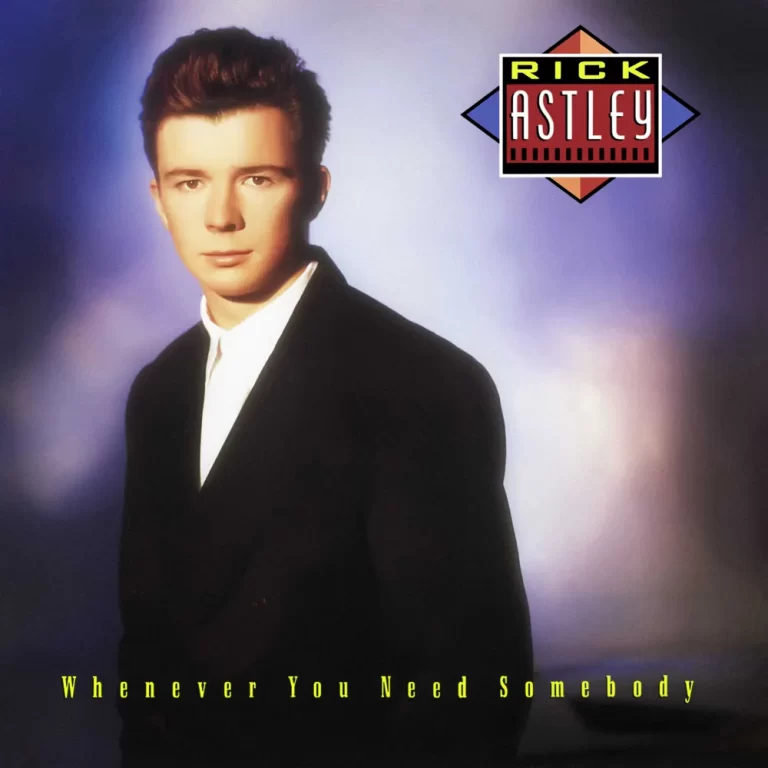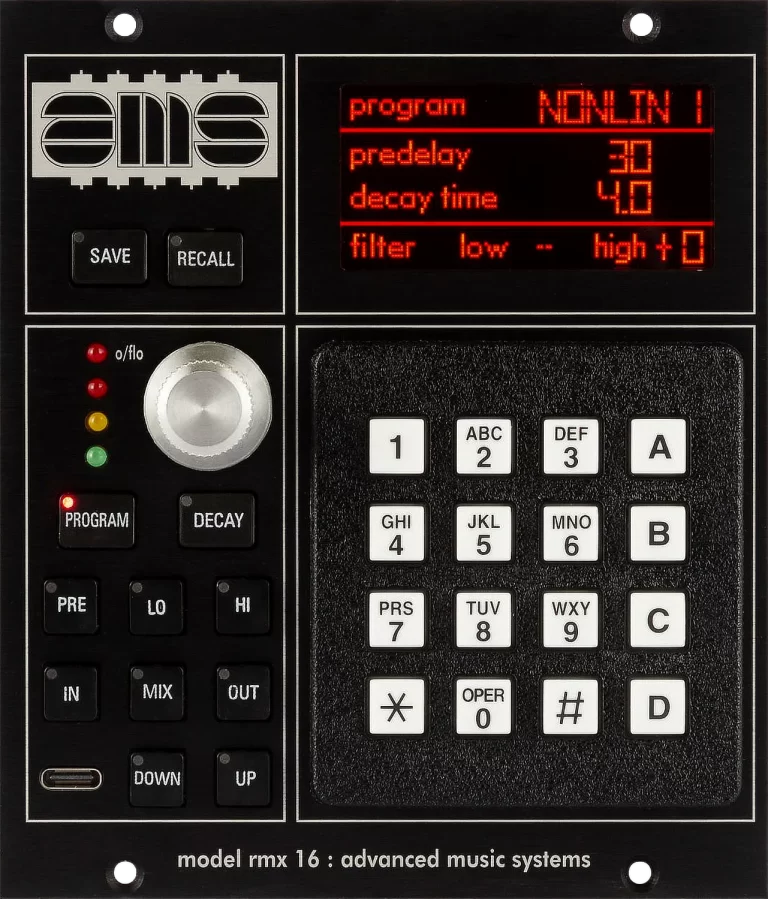The History of Digital Reverb
January 1, 2024
World's First Digital Reverb
EMT 250 Digital Reverb
The introduction of the EMT 250 Digital Reverb marked a groundbreaking moment in music production. As the first-ever digital reverb unit, the EMT 250 revolutionised the way audio engineers could manipulate and create reverberation. Its advanced digital processing capabilities allowed for precise control over the characteristics of the reverb, providing unprecedented flexibility and a level of consistency that was unattainable with earlier analogue methods. The EMT 250’s impact on music production was transformative, setting a new standard for the creation of immersive and realistic sonic environments.
“The EMT 250 digital reverb is still in use today, throughout the world in high-end studios”
The EMT-250 was used on these classic recordings
Another German Reverb
Dynacord DRS 78 Reverb
The Dynacord DRS 78, introduced in 1978, stands as a notable contender in the realm of early digital reverbs. Hailing from Germany also, this digital reverb unit carved its niche with a distinctive sonic character. Boasting advanced processing for its time, the Dynacord DRS 78 allowed users to shape reverberation with precision, offering a versatile tool for audio engineers. While perhaps not as widely recognised as some counterparts, the Dynacord DRS 78 played a significant role in the transition from analogue to digital reverberation.
“The Dynacord DRS 78 like the EMT 250 before it, hailed from Germany”
An American legend is born
Lexicon 224 Digital Reverberator
The unveiling of the Lexicon 224 digital reverb in 1978 marked a pivotal moment in the history of audio processing. Renowned for its unparalleled sound quality and innovative algorithms, the Lexicon 224 quickly became an industry standard, leaving an indelible impact on music production. Its sophisticated capabilities, including a rich set of parameters and intricate algorithms, allowed engineers to craft lush, realistic reverberations.
The Lexicon 224’s influence endures today, as its distinctive sonic signature remains sought after in various genres of music. Its continued use attests to its timeless contribution to the world of sound engineering, shaping the texture and ambiance of countless recordings across decades.
“Great sounding machine that has served me well since I first bought it in the 70’s. Recently rebuilt the power supply and did some component updates. The Lexicon 224 has it’s own sound and works well with my Lexicon 480L and my Lexicon 300L.”
“The Lexicon 224 like the EMT 250, can still be found in studios the world over”
The Lexicon 224 was used on these classic recordings
A different Approach to Digital Reverb
Ursa Major Space Station
In the sonic landscape of 1978, the Ursa Major Space Station emerged alongside the Lexicon 224, contributing its own unique chapter to the evolving world of digital reverb. The Ursa Major Space Station, renowned for its pioneering design, offered a distinctive approach to reverb processing. Embracing digital technology, it provided musicians and engineers with a novel means of sculpting atmospheric and ethereal reverberations.
The unit’s innovative algorithms and spatial manipulation capabilities set it apart, allowing for the creation of otherworldly soundscapes. While not as widely ubiquitous as some counterparts, the Ursa Major Space Station remains a revered piece of vintage audio gear, cherished for its idiosyncratic sonic character and its role in pushing the boundaries of creative sound design during a transformative era in music production.
“Since I received the SST-282 I must say it’s a jaw dropping and playful unit. Everything sent through sounds magical warm and bright. As for the time it was made the delay time isn’t the longest, but I mean for drums, perc, just about everything just adds more richness to the sound.”
“Love it or hate it, the Ursa Major Space Station was very different ot those which came before it”
A Studio Legend Changed The World
AMS RMX 16 Digital Reverb
There have been many digital reverbs over the years, but few are as revered as the AMS RMX 16, which you will still find in studios the world over, some 40 years later. That in itself is enough to indicate just how good this reverb unit is, but it is also the only ‘old’ digital reverb that is being remade now. The AMS RMX 16 Digital Reverb occupies a significant place in the history of audio technology, symbolising the transition from mechanical to digital processing, shaping the sound of an era, and leaving a lasting impact on the world of music production.
The AMS RMX16 became famous for its Non-Linear preset, a gated reverb developed with input from Hugh Padgham, the pioneer behind the iconic 1980s drum sound. This feature alone secured its success, but the RMX16 had more to offer. Its Ambience preset was also widely favoured, and overall, the AMS remains an outstanding reverb unit, whether digital or otherwise.
What do you do when an old reverb is still so popular after nearly 40 years? You update it and release it once again. The AMS RMX16 was the world’s first microprocessor-controlled, full-bandwidth digital reverberator and characterised an enormous number of seminal recordings from the 1980s onwards. Its designer’s love for music and experience in the aerospace industry meant it was way ahead of its time on release.
“The AMS is simply beautiful sounding. When they came out, I used one in a studio and fell in love with its warmth and versatility along with the simplest UI ever designed. It’s so simple to use, it’s silly! For me, it will always be my “go to” reverb and I have a ton of other reverbs from Lexicons to Eventides, etc… While they are a dream to use, there is a well know flaw in their design and reliability. There are 14 slotted boards inside the unit, and they are very delicate! AMS’s don’t like to be roughly treated and beware if you buy one and it’s shipped to you! Prices seem to be steady, but like most vintage gear, possibly on the up….”
The AMS RMX16 was used on these classic recordings
Chris Lord Alge's Favourite Reverb
SONY DRE 2000 Reverberator
In 1981, Sony introduced the DRE 2000, a groundbreaking digital reverb unit that left an enduring impact on the world of audio processing. The Sony DRE 2000 represented a leap forward in technology, incorporating innovative algorithms and signal processing capabilities. It was Sony’s first step into the world of Digital Reverberation, and it made quite the impact with those who could afford it.
The Sony DRE 2000 was one of the first, and last, hugely expensive digital reverbs to come out of Japan, and it found favour with a number of engineers, perhaps most famously with Chris Lord Alge, who uses it on every drum mix.
“Owning several EMTs, Yamaha Rev1, AMS RMX16, Bricasti and Lexicon 300, I really have to admit that the Sony DRE 2000 is the most incredible tool in my workshop. Throw it on snare drums, on analog modular synths, electric guitars, even on orchestra, it S-H-I-N-E-S! That’s all – simply the most 3d “artificial flavoured” reverb out there, bar none, ever, period. things it can’t do: giving dimension to upright bass, bass drum and hi-hat. anything else: rarely something greater than the Sony! sadly it is hard to service, sometimes impossible. anyone experienced in repairing those precious gems? mine starts to bother me sometimes with weird noises coming out of the DA converters at times…”
“This is it, the reverb made famous by Chris Lord Alge who uses it to this day on all his mixes, the Sony DRE 2000. It is a beast of a reverb both physically and in terms of its sonic signature. There are few units left in the wild, as they are fragile and difficult to fix, but thankfully plugin recreations are starting to appear which should preserve its place in history, and deservedly so.”
The Sony DRE 2000 was used on these classic recordings
Another German Classic
QUANTEC ROOM SIMULATOR
In 1982, the audio world experienced a significant evolution with the release of the Room Simulator Digital Reverb. Developed by the German company Quantec, this groundbreaking reverb unit introduced a new level of sophistication to the realm of digital audio processing. The Quantec Room Simulator stood out for its innovative approach, offering a distinctive room simulation that went beyond traditional reverberation effects.
Utilising advanced algorithms, it allowed audio engineers to emulate the acoustics of different spaces, providing an unprecedented level of control over room characteristics. The Quantec Room Simulator quickly became a staple in professional studios, contributing to the sonic landscapes of countless recordings by imparting a realistic sense of space and dimension. Its release marked a pivotal moment in the ongoing quest for authentic and customisable reverberation in the ever-evolving field of audio production.
“I have owned one for several years it was my main reverb for years I also have an EMT plate and several others including the big kurtswild the Quantec is the most interesting and the best for giving the vocal a smooth and listenable edge you must live with the Quantec to get it a guy named Tom Flye had one and I loved it on my snare another friend came back from Germany broke so I scored it ten years plus so that’s it it’s everything folks say get one if you can it its gets hot it will explode I have a little quiet fan sitting on top that’s on when it is on that is the trick. “
“The Quantec Room Simulator like many of its forebears can still be found in daily use around the globe”
American Studio Classic
Eventide SP 2016 Signal Processor
The Eventide SP 2016, released in the mid-1980s, stands as an iconic milestone in the history of digital reverb. Developed by the renowned audio processing innovator Eventide, the SP 2016 quickly gained recognition for its revolutionary approach to reverb algorithms. This rack-mounted digital reverb unit offered a rich palette of reverberation effects, from classic halls to innovative spatial manipulations.
What set the SP 2016 apart was its unique ability to seamlessly blend different reverberation algorithms, providing an unparalleled level of sonic versatility. Used prominently in studios across various music genres, the Eventide SP 2016 left an indelible mark on the audio industry, influencing countless recordings with its distinctive, high-quality reverberation that continues to be cherished by audio professionals.
“Another American Reverb with excellent sound quality and great desirability”
Another Excellent Japanese Reverb
Yamaha REV1 Professional Digital Reverberator
The Yamaha Rev-1, introduced in 1983, represents a significant chapter in the evolution of digital reverberation technology. Crafted by the renowned Japanese audio equipment manufacturer Yamaha, the Rev-1 made a distinctive mark with its advanced processing capabilities and innovative features. This rack-mounted digital reverb unit showcased Yamaha’s commitment to delivering high-quality sound and versatility in spatial effects. Boasting a diverse array of reverberation algorithms and an intuitive interface, the Yamaha Rev-1 became a staple in both recording studios and live sound applications.
The Yamaha REV1 has one of the most sophisticated looking remotes of all vintage reverbs, providing a rich environment for adjustment. The unit makes available 30 pre-set memories. They include such settings as: LARGE HALL, HAND CLAP, PERCUSSION PLATE, and CHORUS. In addition, the user can store modifications of these pre-set programs, or his own program in any of the 69 user-programmable memories.
“One of my regrets, was selling my Rev1! About 10 years ago. I first saw one being used in SAE London and immediately wanted one. When they came out, they were a fortune over here in the U.K and Yamaha placed it directly into the AMS / Lexicon 480 price bracket. Unfortunately, the seed was already set, and most studios went either for one or two of the others, so consequently these units are quite rare. I eventually bought one on an auction site and I have to say I was surprised now reminiscent the sound was to a Rev 7. I’m told, Yamaha used the same LS I chip inside both units but with more options for the Rev 1. The remote control looks absolutely fantastic and has pretty much every permutation available to the end user. The display, while intuitive is helpful but not a necessity. These weigh a ton, so if you rack it, be aware!”
Another Classic from Lexicon
Lexicon 480L Digital Effects System
By the time the mid 1980s rolled around, digital reverb was everywhere, with new models appearing every second month it seemed, from not only the initial pioneers such as EMT, Lexicon, Sony and Yamaha, but from newcomers such as ART, Roland and Alesis who brought digital reverb within reach for home studios.
Companies such as Lexicon continued to develop and innovate, with a range of digital reverb processors that made them the prominent player in the world of studio grade digital reverbs. Models such as the Lexicon 480L are legends in the recording world, with countless records having used it for adding lush reverb effects to their sonic landscape.
While there have been many reverbs released over the last 40 plus years, few remain in production today, with many engineers switching to VST plugins. Lexicon still offer the PCM 92 and PCM 96 digital reverbs, and AMS have re-released the AMS RMX16 digital reverb as a 500 series unit. There have been very few new manufacturers who have dipped their toe into the world of hardware digital reverbs of late. However, Bricasti Design achieved great success with their brilliant M7 digital reverb, which has dominated studios the world over since its release.
Still, it is the original old digital reverbs which have remained close to the hearts of many studio engineers. The Lexicon 224, Lexicon 480L, and the AMS RMX 16 are without a doubt, the most revered digital reverbs of all time and remain in use in some of the biggest recording studios around the globe.
“Probably like a lot of 480L owners now, I had to wait until one came up at a sensible price but make no mistake about it, it was well worth the wait! while you’re probably thinking, why bother, as plugins are getting so good at emulating the originals at a fraction of the price? I personally believe there is something missing by not having the original hardware in front of you and I’m sure as time goes on, these units will be snatched up by enthusiasts and studios.”
“The Lexicon 480L is regarded as one of the most beautiful sounding reverbs ever made”






























